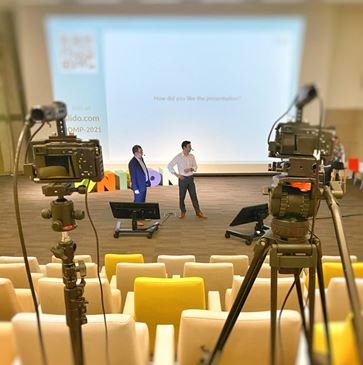Multimedia storytelling blends various elements like text, images, audio, and video to create a compelling narrative. Mastering this art can captivate your audience and enhance your message. Here are essential tips for effective multimedia storytelling.

Understand Your Audience
Identify Audience Preferences
Before creating your multimedia story, understand who your audience is. Identify their preferences, interests, and needs. This will help you tailor your content to resonate with them and keep them engaged.
Consider Their Context
Think about where and how your audience will consume your multimedia story. Whether it’s on a mobile device, computer, or in a physical space, adjusting your format and content to fit the context ensures a better experience.
Craft a Clear Narrative
Define Your Core Message
Start by defining the core message of your story. What do you want to communicate? A clear and concise message will guide your multimedia elements and help keep your story focused and impactful.
Structure Your Story
Organize your content with a clear beginning, middle, and end. Introduce your topic, build up with detailed information or drama, and then conclude with a resolution or call to action. This structure keeps your audience engaged and makes your story easy to follow.
Utilize Visual and Audio Elements
Choose High-Quality Visuals
High-quality images and videos can significantly enhance your multimedia storytelling. Use visuals that are clear, relevant, and engaging. Avoid using low-resolution or irrelevant images that can detract from your story.
Incorporate Relevant Audio
Audio elements, like background music and sound effects, can add depth to your story. Ensure that audio enhances the mood and message without overwhelming the visual content. Balanced audio can make your story more immersive.
Make It Interactive
Include Interactive Features
Interactive elements can increase engagement. Consider adding clickable buttons, polls, or interactive infographics that allow your audience to explore content in a more dynamic way. This interactivity can make your story more memorable.
Enable User Participation
Allowing your audience to contribute or participate can enhance their connection with your story. For example, user-generated content or interactive Q&A sessions can involve your audience more deeply in the narrative.
Focus on Consistency
Maintain a Cohesive Style
Consistency in style across all multimedia elements is crucial. Use uniform fonts, colors, and design elements to create a cohesive look and feel. This consistency reinforces your brand and makes your story more polished.
Align Visuals with Text
Ensure that your visuals support and enhance your text. Avoid using images that contradict or confuse the message. Well-aligned visuals and text help clarify your narrative and keep the audience focused.
Test and Refine
Gather Feedback
Before finalizing your multimedia story, gather feedback from a sample of your audience. This can provide valuable insights into how well your story is received and where improvements might be needed.
Refine Based on Input
Use the feedback to refine your content. Adjust visuals, audio, or interactive elements to address any issues or enhance engagement. Continuous refinement ensures your multimedia storytelling is as effective as possible.
Conclusion
In conclusion, effective multimedia storytelling involves understanding your audience, crafting a clear narrative, and utilizing engaging visuals and audio. Incorporating interactive features and maintaining consistency are also crucial for creating a compelling story. By following these tips, you can create multimedia content that captivates and connects with your audience.











